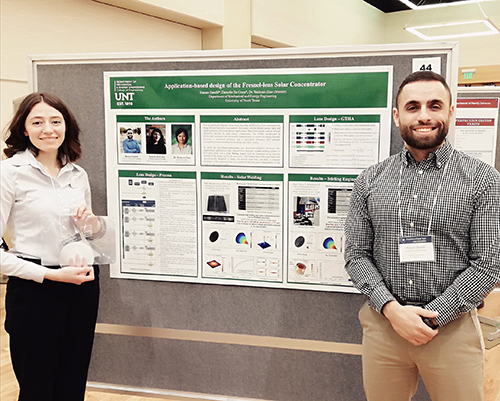
Two mechanical and energy engineering doctoral students received first and second place at the 10th Graduate Research Symposium of the Federation of North Texas Universities. Guo Quan Lim received first place for his work on ozone research and pollutants in Denton County, and Hassan Qandil received second place for creating a computer algorithm to better harvest the sun’s energy using Fresnel lenses.
Diving into Denton
Lim’s research focused on a long-term trend analysis at the Denton Airport South monitoring station where volatile organic compounds (VOCs) – which serve as a precursor to ozone – were measuring higher than in urban areas like Dallas and Fort Worth.
“We found that natural gas production was responsible for most of the VOCs in Denton,” said Lim. “However, the volume of natural gas production doesn’t directly translate to the VOCs concentration. Fort Worth had a higher gas production volume than Denton, but on average it measured at less than a third of Denton’s.”
Lim said the key difference between Fort Worth and Denton was stricter regulation, including a higher setback distance and more stringent reporting criteria, and that imposing stricter regulations on the gas well in Denton would likely be beneficial to local air quality.
Concentrating on energy
Qandil’s research, along with the help of undergraduate student Danielle Da Costa, focused on using a computer algorithm to design Fresnel lens concentrators, which are plastic sheets with a series of concentric grooves etched into it to focus sunlight onto a particular spot. The developed design can meet the geometry and energy needs for any thermal application, such as heating water, drying corps, or even welding steel and melting glass.
“Using a computer algorithm, the research matches the lens concentrator design to any application that requires heat input,” said Qandil. “The optimized design more efficiently utilizes space and resources, reducing the initial costs while maximizing the efficiency of energy harvesting.”
The work, along with the ongoing research on lens manufacturing, could lead to a future where customers could design and fabricate lenses that best align with their energy needs.